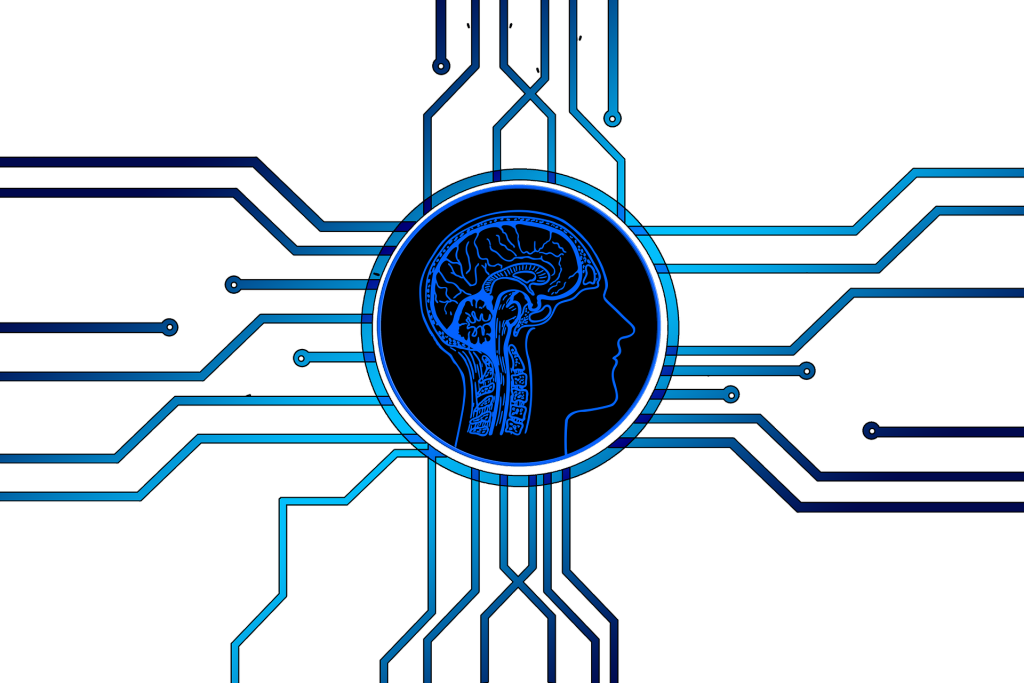In today’s digital landscape, the potential of artificial intelligence is almost boundless. Companies are now able to have automated software do some of the duties that could only be done by humans before. One of the most visible examples of this is an automated drive-through. In some fast-food joints, they only have a large touch-screen on their drive-through section, where the customers would only need to tap what they want to order, and then they would proceed to the next window where they would pay and pick up their order.
The ability to simply invest in an automated practice instead of hiring a human worker is a great advantage for companies, although it does come with a price. Who knows, soon enough there might no longer be a need for workers at all, and all the processes and tasks that we do today would then be easily done through digital means. An example of how technology has lessened the need for workers would be what happened to the postal service after e-mail went viral. There was a substantially diminished need for postmen, and despite the fact that traditional mail is still being used today, a lot of mailmen were laid off due to the decrease in demand.
You’d be surprised to know some of the customer service representatives you’re chatting with online aren’t actually people. Chatbots have grown extremely popular recently, and some companies make use of them to answer any frequently asked questions or concerns of their customers on their website. But despite the many advantages that technology has afforded us, there are simply some things that need a human touch. There are times when customers simply do not feel comfortable interacting with an artificial intelligence, and they would rather prefer an actual person who can truly understand their needs and wants.
Digital media outsourcing is no different in this regard. Some might think that only the companies that directly dabble in customer service need actual human interaction, and a company that specializes in online marketing would have more AIs than actual people on their workforce, but this isn’t the case. Despite the fact that technology is our bread and butter, and we make sure to employ the best and latest techniques available, not all digital media companies are making use of artificial intelligence. Here, we explore some instances where an actual human would do better than an automated process.
In Information Technology
IT professionals are the ones who handle most of the technological aspects of any company. Whether it is a digital media company, or a subcontractor, most offices will need a technological infrastructure for interaction between the people inside the office. And the ones who keep the system updated and secure are the IT professionals. Most office workers would only call for the IT people whenever they have something wrong with their computer. However, aside from providing onsite technical support, IT people in the office also do some programming and development for certain applications the company needs.
Now one thing that should be acknowledged is that repetitive, menial tasks are hard to maintain. In this area at least, computers and automated systems will have real humans beat, as they can produce the same amount of output at the same rate for as long as needed. For example, when it comes to solving problems that require crunching a large amount of data, automated systems can do that within the blink of an eye, whereas it would take humans a while to finish. Another reason for this is that humans can sometimes be easily distracted, something that can be completely avoided if one were to make use of an artificial intelligence.
However, when it comes to spotting problems that are beyond the norm, computers can never compare to humans. An automated process can only do specific things that it was programmed to do, and anything beyond that set of particular orders and tasks are beyond its ability to process. A sophisticated software would be able to spot bugs and errors in a section of code within milliseconds, but they still wouldn’t be able to create a program by themselves. IT personnel still need to oversee and guide the software on what it is supposed to do, and the software is only used to supply what the human needs.
In Human Resources
From the very name of the department itself, most would think it obvious that in this space, automated processes would have no place. However, artificial intelligence cannot be discounted as many processes and tasks are actually done by software. The basic tasks of human resources professionals are to keep track of the necessary documents that employees have, as well as to keep them up-to-date on any benefits or events that they need to know about.
Aside from that, HR is also in charge of informing the employees about company policy and its rules and regulations. If disciplinary action is needed, a report would be filed to the HR, and the department’s personnel would be the ones to inform the employee about their misconduct, as well as the disciplinary action (if such needs to be meted out). Automated systems are more efficient when it comes to filing records and being able to pull up a certain document quickly. File management and organization software are being utilized by most HR personnel, as they make it easier to keep track of documents.
Real humans still outshine artificial intelligence in this sector, as computers are unable to understand context and nuance like a real human. Beyond the file keeping, human resources personnel also deal with the employees personally, they answer any questions that the employees might have, and they field any concerns that they are able to handle. No matter how detailed or sophisticated automated software can be, they cannot take the place of real, human interaction, which is essential in order to do the duties of a human resources professional.
In Search Engine Optimization
Search engine optimization, defined simply, is the process of getting customers to visit your website without having to spend money on ads. One of its aims is to rank high on the organic listings, basically being one of the top search results on search engines, excluding the ones at the very top which are mostly paid spots. There are many methods and practices included in SEO, and the results are not attained overnight. The results are only felt after a few months of research, data gathering, and implementation of strategies, in order to ensure the best possible outcome.
Now as most people know, when it comes to data analytics, automated systems are unmatched. They are able to process data, and crunch numbers at a speed that no human could ever match. Companies that offer SEO services make great use of many analytics platforms and other software, which do help them rank higher in search engines. However, just because a website is the first thing somebody sees when they look for something on Google, does not mean it is a guaranteed hit. There are times a website has a tremendous number of viewers and visitors, but in comparison their conversion rate, or the actual number of people who were interested with what they had to offer, was glaringly small.
The reason for this is that these websites optimized their pages for search engines. When it comes to a search engine’s systems analyzing their website, they would surely be at the top, but they failed to optimize their page for humans. In the end, the customers that a company is trying to reach are human, and therefore need to be considered when they’re doing SEO. Computers don’t really take that into account, so it falls to the human SEO specialists to both analyze and adjust the page for search engines, as well as make it attractive for the people.
In Content
When it comes to SEO, many experts believe in the saying that “Content is king.” Content, at its very core, means information that can be consumed by people. When it comes to SEO, this usually means articles, blogs, and even some infographics and videos, and they mostly have something to do with what a certain company is about. If it is well-constructed content, it will garner traffic to the website, and will increase the chances of conversion.
When it comes to written content, there are certain keywords that content writers can include in their articles, which can increase the chances of that page getting a higher ranking. Now automated systems have the potential to check what keywords to include and how often, but only humans will ever be able to place it in an article in a natural way, so it doesn’t seem forced. Out of all the examples listed here, content is most likely the sector where artificial intelligence has the least hold, as only humans will truly know what other humans want to read about.





